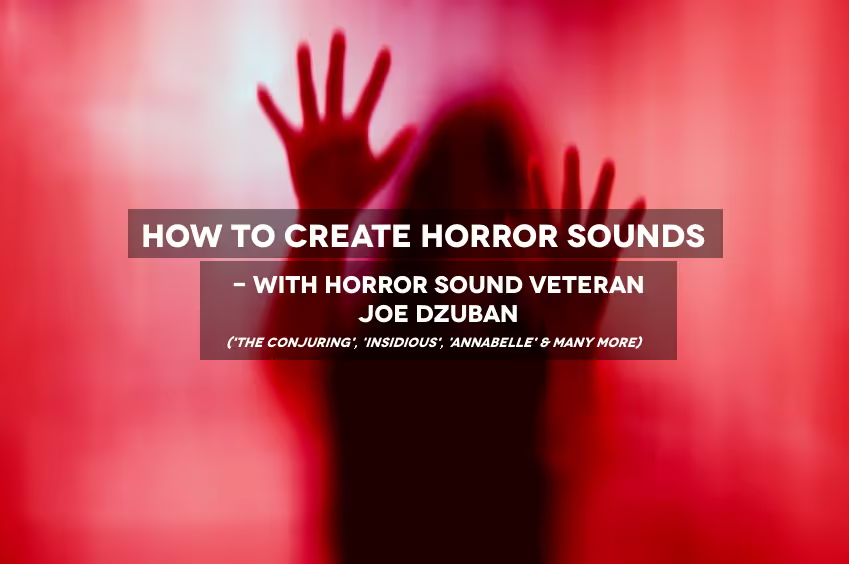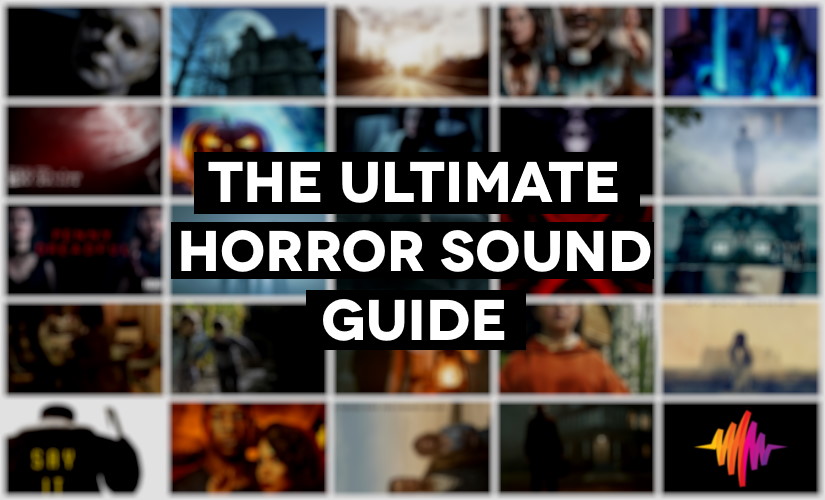Sound designer Joe Dzuban worked on five films with horror director James Wan, starting with Insidious in 2010. Since then, he's designed and/or mixed the sound for a dozen top horror films including The Conjuring, Annabelle, Malignant, Scary Stories to Tell in the Dark, and Crimson Peak.
Here, Dzuban shares his insights and tips on how to design amazing horror sounds!
Sound designer/re-recording mixer Joe Dzuban (at Warner Bros. Post Production Creative Services in Burbank) is an undeniable authority on designing and mixing sound for horror films.
He’s worked on some of the best-known horror films by top horror directors like James Wan and Guillermo del Toro. His credits include Wan’s Insidious (re-recording mixer / supervising sound editor), The Conjuring (sound designer / supervising sound editor), Insidious: Chapter 2 (re-recording mixer / sound designer / supervisory sound editor), The Conjuring 2 (supervising sound editor), and Malignant (re-recording mixer / supervising sound editor), and del Toro’s Crimson Peak (re-recording mixer / additional sound design).
Dzuban was sound designer and re-recording mixer on two films from director John R. Leonetti: Annabelle and Wish Upon, and sound designer on director André Øvredal’s Scary Stories to Tell in the Dark and director Jacob Chase’s Come Play. He also mixed Paranormal Activity 3 (directed by Henry Joost and Ariel Schulman) and Paranormal Activity: The Marked Ones (directed Christopher Landon).
Get ready for some great tips on designing horror sounds, courtesy of Joe Dzuban!
What are five essential tips you’d share on how to design gory/scary/cringe-inducing horror sounds?
1. Record something! Find something unusual and unique to record for your gore. Try various things you can tear and destroy to get a variety of interesting textures. Take a trip to the grocery store!
2. Don’t over-do it: As sound editors, we love to layer our sounds. But when it comes to gore, fewer layers are better. Give the audience something strong to hold onto. Don’t clutter the moment.
Evocative sounds will make the picture all the more squeamish.
3. Sync is optional: Don’t get too tied to picture. Make a sound that works and tells a story, and 9/10 it’ll work to picture. Evocative sounds will make the picture all the more squeamish.
4. Don’t stack all your sounds: Think of moments in terms of double or triple events. So a stab isn’t just a single sword ‘shing;’ it might be a tear followed by a thrust, followed by a juice splat.
5. Try, try, and try again: Try your sounds to picture, live with them for a few days, revisit them, and then try new sounds. Experiment with different types of sounds and rhythms until you get to that ‘moment’ where it works!
Sound highlight - article continues below:
Popular horror sound libraries:
What’s your approach to creating effective jump scares? (Any tips to offer on how to make the best/most effective jump scares?)
Jump scares work best when the audience least expects them. Much of the success of a scare comes from picture editing. But as sound folks, we can help those moments by trying to ‘lull’ the audience before the big jump. We want them to lean in a bit. Getting into that lull is the creative challenge and is different for every film. Sometimes the lull lives for say 15 seconds before the scare, other times it’s a brief pause just before the action.
Take the transient ‘edges’ off of door closes or footsteps, or EQ them a bit so they are tucked into the mix…
I make sure all the sounds preceding scares are ‘rounded’ and less staccato. Take the transient ‘edges’ off of door closes or footsteps, or EQ them a bit so they are tucked into the mix – we don’t want any sounds capturing the audience’s attention.
Also, try to find a way out of music so that we really minimize the soundtrack.
For the sting itself, use sharp, strident sounds and play them ‘loud and proud.’
Bonus: Download 13 free horror / gore sound effects from Soundbits:
Anything that sound designers should avoid when creating sounds for a horror film?
Avoid excessive sounds in horror films. Don’t overdo the soundtrack with a classic ‘Hollywood’ feel. We don’t need to hear EVERY footstep, EVERY hand-pat, or 30 layers of BGs!
Find those few sound elements in a scene that tell the story and make them come to life.
Horror soundtracks tend to be concise, compact, and incorporate only the bare essentials of what is needed to tell the story. Find those few sound elements in a scene that tell the story and make them come to life.
A big thanks to Joe Dzuban for sharing excellent tips on designing horror sounds and to Jennifer Walden for the interview!
Want to learn more about horror sound?
Check out the Ultimate Horror Sound Guide below:


